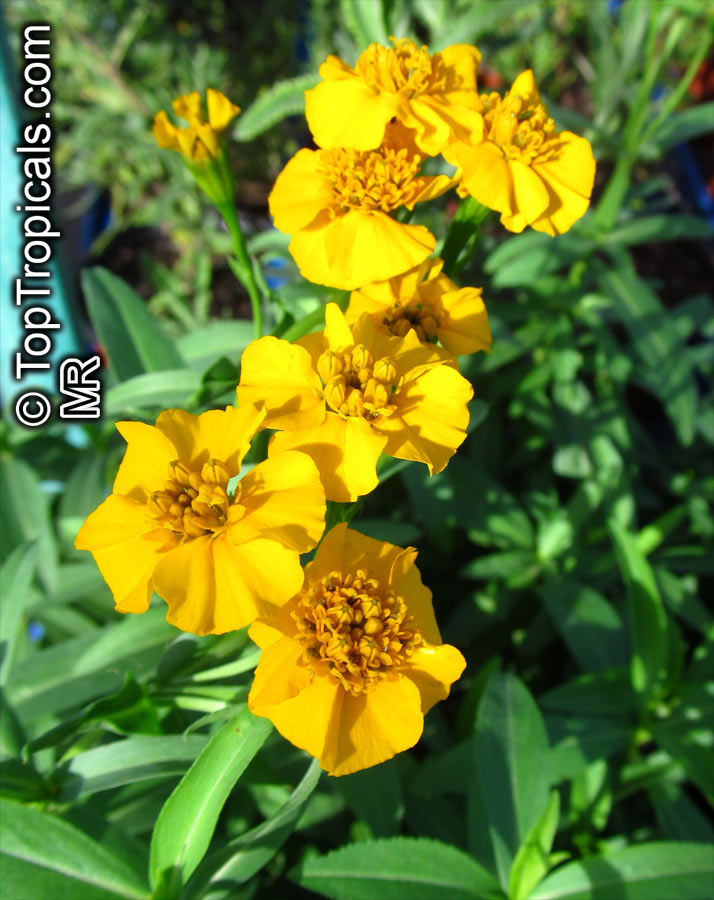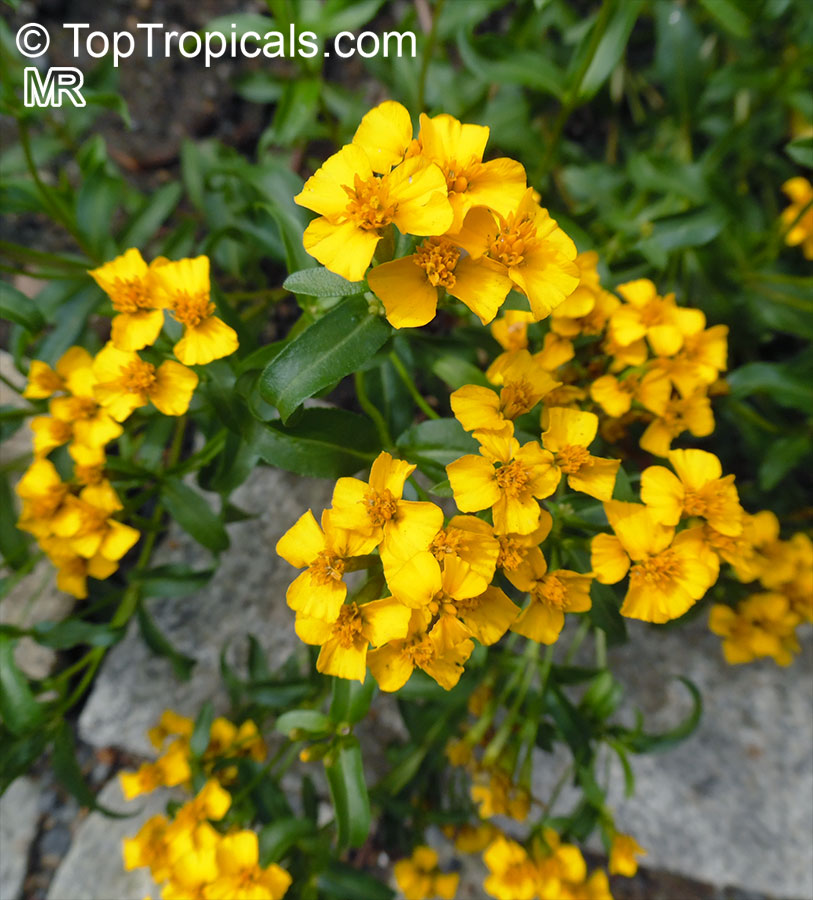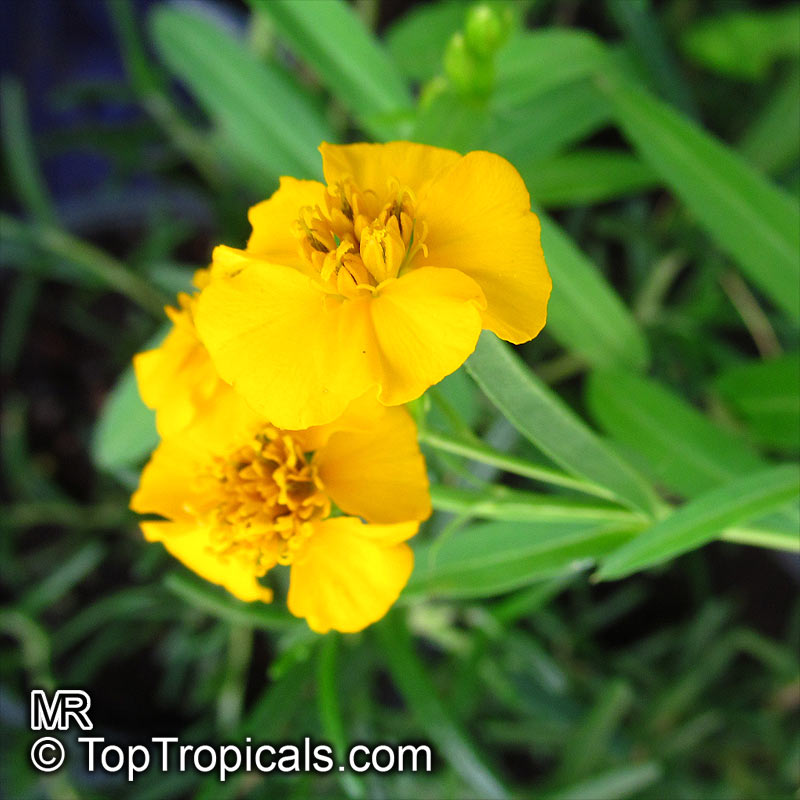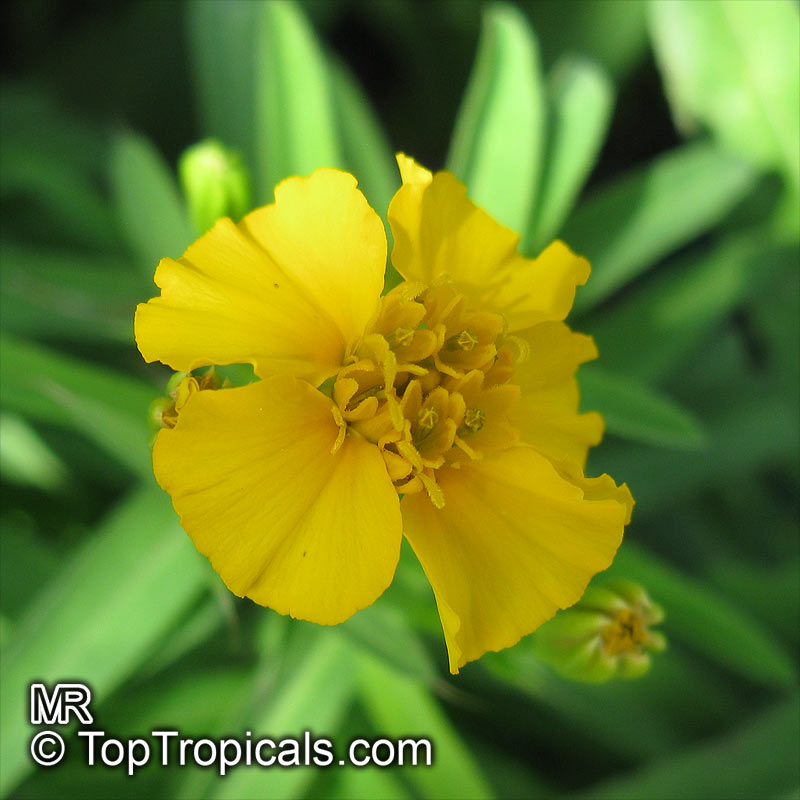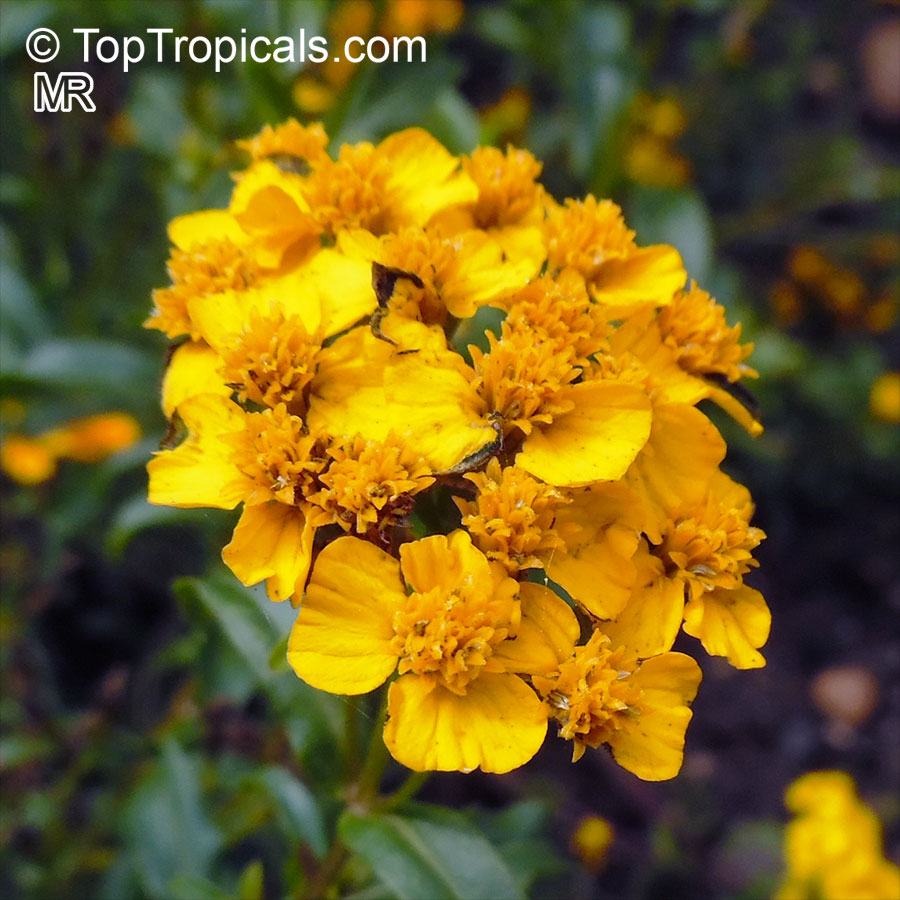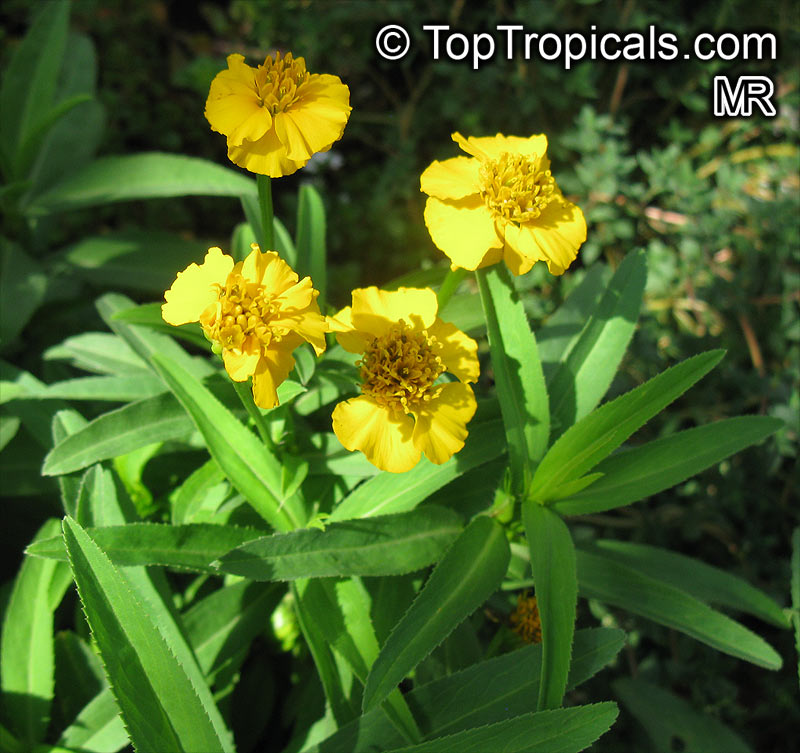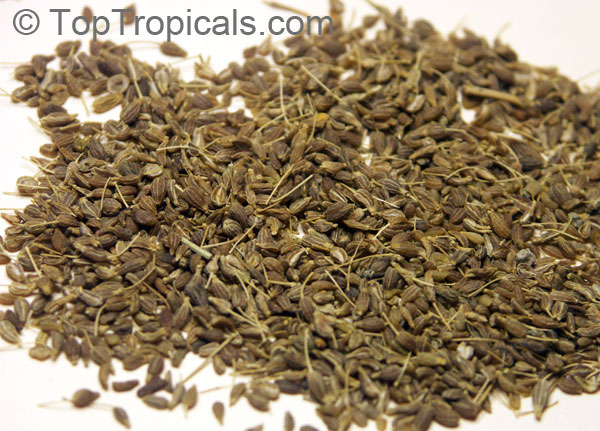Tarragon - Plant Encyclopedia Results
Top Tropicals Plant Encyclopedia
| Number of plants found: 2 |
Botanical name: Tagetes lucida
Common name: Mexican Tarragon
Family: Asteraceae
Origin: Central America, Mexico









Native to Central America, Mexico, Tagetes lucida (Mexican Tarragon) is a small shrub that grows 2-5 feet tall and wide. It's a great choice for warmer climates, as it doesn't perform well in cold weather or temperatures below 15 degrees F. The plant usually grows best in full sun, though it can tolerate semi-shade conditions. It needs regular watering in order to thrive and will produce yellow and orange flowers during its blooming season. The flowers are highly fragrant and attract butterflies and hummingbirds to your garden.
Tagetes lucida has ethnomedical uses. It is used as an herbal remedy, a spice, and herb. In Mexico, Tagetes lucida is a common ingredient in herbal teas and is used to treat various ailments, such as digestive and immune system disorders.
Tagetes lucida is an ideal plant for USDA Hardiness Zones 9-11, and easy to cultivate as it requires minimal maintenance and fertilizer. In pots, it should be grown in a well-draining soil mix with 6-8 hours of sun per day. When growing Tagetes lucida in cold regions, you may want to bring the pot indoors or place it in a sheltered area during the winter months. Make sure to place the pot in a sunny spot and water regularly, to keep the soil moist but not overly wet. Lastly, mulch your plant to keep the soil temperature and moisture levels consistent. With proper care, Tagetes lucida will add vibrant colors and a pleasant fragrance to your garden year-round.
Botanical name: Pimpinella anisum
Common names: Anise, Ani
Family: Apiaceae / Umbelliferae
Origin: Egypt, Greece, Crete and Asia Minor









Anise is known for its flavor, which resembles liquorice, fennel and tarragon. Western cuisines have long used anise as a moderately popular herb to flavor some dishes, drinks, and candies, and so the word has come to connote both the species of herb and the licorice-like flavor. The most powerful flavor component of the essential oil of anise is anethole. Anise has a reputation as a medicine in coughs and pectoral affections. In hard, dry coughs where expectoration is difficult, it is of much value.
Anise is a herbaceous annual plant growing to 3 ft. Anise plants grow best in light, fertile, well drained soil. The seeds should be planted as soon as the ground warms up in spring. Because the plants have a taproot, they do not transplant well after being established, so they should be started either in their final location or transplanted while the seedlings are still small.
Use link to repeat this search:
https://toptropicals.com/cgi-bin/garden_catalog/cat.cgi?find=Tarragon&search_op=and&keyword_op=and&language=e&number=10
&no_change_lang=1&user=tt&sale=1&first=0
